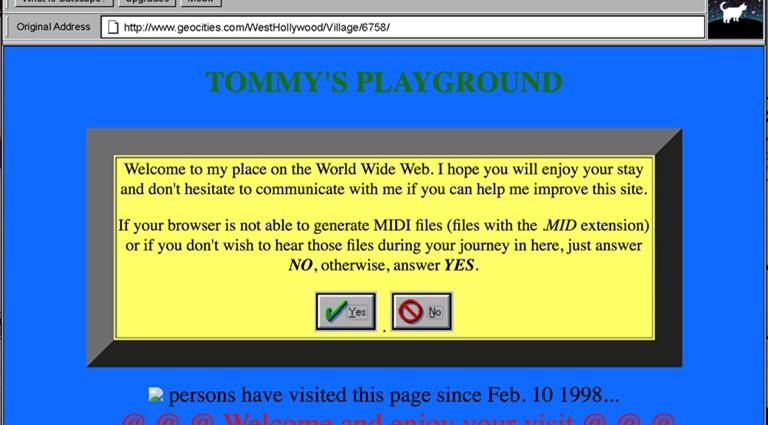If there is something that our culture loves, it is nostalgia. There are many aspects that make us go to that feeling of sadness or distance, and with the world of the internet, even more so. We see this directly with platforms such as Geocities, which was within what we recognize as the ‘old internet’, and of which there are not a few who came to use it to host their website. But what was special about Geocities? How did it work?
Geocities, the star of the web in the 90’s
In 2009, one of the most emblematic sites that those who saw the first steps of the Internet used as a revolution came to an end. We are talking about Geocities, a platform that acted as today’s hosting to host our website…
But with a very particular format. Surely, that is what made it so attractive and why many (the most advanced) started with it. For the veterans, Geocities was second to what Facebook is today in terms of popularity, and it turned out to be one of the sites that promoted the concept of online communities.
And it is that these were created by inexperienced users who sought to establish a presence on the web back in the 90’s, in the heyday of the pages with the ‘.com’ domain, when the internet began the ‘boom’ to become what we know today. It was at a time when there was no Facebook, YouTube, Twitter, blogs or anything like that, and so Geocities became the star of the web.
How was it
All in all, this web hosting platform fell under the name 1.0 in which the internet was becoming popular at full speed. To put ourselves in context, P2P did not exist then, and everything that weighed more than a megabyte was already too big for the taste of Internet users and the bandwidth of the connections in use.
But, what was Geocities and what did it allow to do in those days? For its part, this hosting platform, as we might consider it today, hosted web pages for free, opening an account with which they gave you a very small space and, on top of that, they put their advertising. This last point is very similar to what Google currently does with its services: provide them for free to users in exchange for them seeing a certain amount of advertising.

The platform was born as an internet ‘Beverly Hills’ as initially announced by its creators in 1995, David Bohnett and John Rezner. The forerunners of this idea had the intention of creating a virtual community that mimics the real world, with pages hosted in cyber cities and other similar concepts.
Very popular, it aroused the interest of the main companies of the emerging internet. That’s how in 1999, Geocities was acquired by Yahoo!, Hotmail’s main rival, in an operation that already left the company a little shaken, because users didn’t like it. From then until its end, and especially with the explosion of blogs and Web 2.0, Geocities has gone downhill in number of users until reaching a situation in which Yahoo! it was more profitable for him to close it than to continue maintaining it.
It never evolved, and hence its end
In addition to giving space to upload your web page, Geocities stood out for offering a directory, in the form of a neighborhood, where you can list and categorize your page or website and thus be easier to find. This neighborhood was joined by a chat, newsletters and, in short, a community where doubts could be answered and interests shared.
It was in 1999 when Yahoo! He noticed Geocities and a transaction that reached almost 4,000 million dollars, closing the transaction in January 2000. At that time, such was the importance of this hosting that it was the 5th most visited website globally.

The problem was that a site that no matter how many years passed, and although technology was already making its own way, Geocities was a website that did not evolve, did not know how to advance, and for which it remained the same as in its beginnings. That was one of the big reasons to give his end, either with Yahoo! or with any other that I had bought him.
It was John Rezner himself, his ideologue, who blamed his disappearance on his poor way of following what the rest of the internet was doing. “Social networks are fashionable things. They have to evolve and I think Geocities had to.” The best example is Facebook, which has evolved over the years and has always remained among the most popular sites.
Therefore, we can say that yes, GeoCities is dead. But it has done so by taking with it thousands of sites created by users throughout the world, some of which got to start in the world of technology and the creation of web pages with this curious system.















